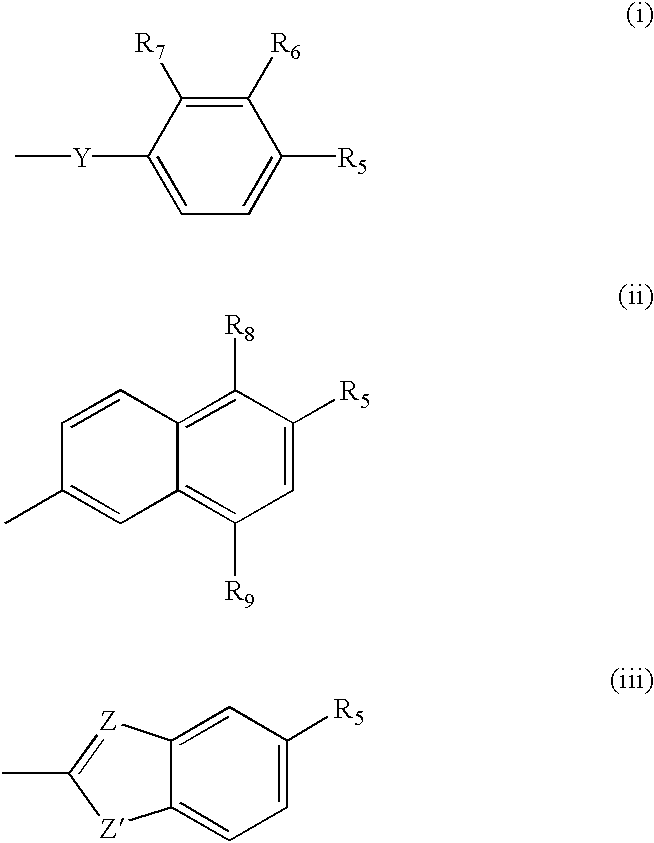Apoptosis inducing adamantyl derivatives and their usage as anti-cancer agents, especially for cervical cancers and dysplasias
a technology of adamantyl derivatives and apoptosis inducing adamantyl derivatives, which is applied in the field of cervical cancer and dysplasia, can solve the problems of limited success of treatment, surgical treatment is generally only successful, and surgery becomes non-feasibl
- Summary
- Abstract
- Description
- Claims
- Application Information
AI Technical Summary
Benefits of technology
Problems solved by technology
Method used
Image
Examples
example 1
Synthesis 2-Oxa-1-adamantanol
386.6 mg (2.54 mmoles) of bicyclo[3.3.1]nonane-3,7-dione is dissolved in 5 mL of methanol and treated with sodium borohydride (100 mg, 2.64 mmoles) at 0.degree. C. for 2 hours. The solution is treated with 5 mL of saturated aqueous sodium bicarbonate for 1 hour at 25.degree. C. and extracted with 3.times.10 mL portions of chloroform. The combined chloroform extracts are combined, dried over sodium sulfate, stripped of solvent in vacuo, and purified by column chromatography (silica, eluant=50% hexanes, 50% ethyl acetate) yielding 343 mg (88%) of the desired product. .sup.1 HNMR (CDCl.sub.3, 500 Mhz): d 1.563 (d, 2H), 1.70-1.76 (m, 1H), 1.788 (d, 2H, J=11.1 Hz), 1.839 (d, 2H, J=13.1 Hz), 1.925 (d, 2H, J=13.0 Hz), 2.310 (s, 2H), 2.690 (s, 1H), 4.283 (s, 1H).
example 2
Synthesis of 3-Methyl-1-adamantyl Acetate
121 mg (0.728 mmoles) of 3-methyl-1-adamantanol are dissolved in 0.2 mL n-heptane and 0.2 mL cyclohexane. A mixture of 0.2 mL (2.25 mmoles) of acetic anhydride and 2 microliters (0.036 mmoles) of concentrated sulfuric acid is added, and the mixture is stirred at ambient temperature for 20.5 hours. The solution is dissolved in 10L of ether and extracted with 10 mL of water. The aqueous layer is extracted with 10 mL ether. The ether layers are combined, extracted with 2.times.mL of water followed by 40 mL of aqueous sodium bicarbonate (10 g / liter), dried over magnesium sulfate, and stripped of solvent in vacuo. The product is a colorless oil with Rf 0.55 (silica: eluant hexane 75%, ethyl acetate 25%).
example 3
Synthesis of 3,5-Dimethyl-1-adamantyl Acetate
2.486 (10.2 mmoles) of 3,5-dimethyl-1-bromoadamantane is refluxed for 16 hours with 2.034 g (20.7 mmoles) of potassium acetate in 10 mL of acetic acid. The solution is poured over 100 grams of ice, allowed to melt, and extracted with 3.times.10 mL of diethyl ether. The combined ether extracts are washed with saturated aqueous sodium bicarbonate followed by saturated aqueous sodium chloride, then dried over sodium sulfate. The solvent is removed under vacuum, yielding 1.521 (67%) of the desired product, a colorless oil. TLC: Rf=0.68 (silica plate: eluant hexane 90%, ethyl acetate 10%). .sup.1 HNMR (CDCl.sub.3, 500 Mhz): 0.858 (s, 6H), 1.115 (d, 2H, J=12.4 Hz), 1.177 (d, 2H, J=12.4 Hz), 1.260 (d, 2H, J=12.3 Hz), 1.367 (d, 2H, J=12.3 Hz), 1.714 (d, 2H, J=11.6 Hz), 1.766 (d, 2H, J=11.6 Hz), 1.939 (s, 2H), 1.976 (s, 3H), 2.191 (m, 1H).
PUM
| Property | Measurement | Unit |
|---|---|---|
| Dimensionless property | aaaaa | aaaaa |
| Dimensionless property | aaaaa | aaaaa |
| Fraction | aaaaa | aaaaa |
Abstract
Description
Claims
Application Information
 Login to View More
Login to View More - R&D
- Intellectual Property
- Life Sciences
- Materials
- Tech Scout
- Unparalleled Data Quality
- Higher Quality Content
- 60% Fewer Hallucinations
Browse by: Latest US Patents, China's latest patents, Technical Efficacy Thesaurus, Application Domain, Technology Topic, Popular Technical Reports.
© 2025 PatSnap. All rights reserved.Legal|Privacy policy|Modern Slavery Act Transparency Statement|Sitemap|About US| Contact US: help@patsnap.com



